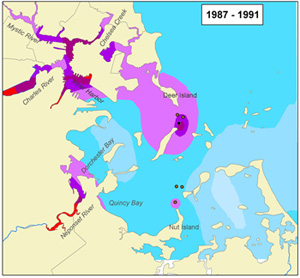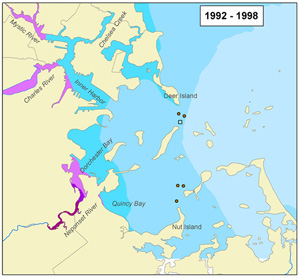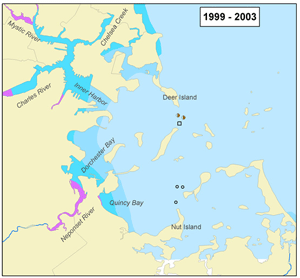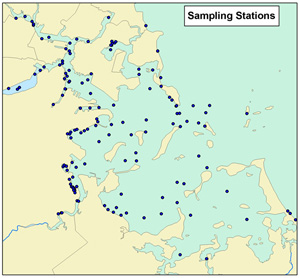Massachusetts
Water
Resources
Authority
Combined
Sewer
Overflow
Control
Plan
Annual
Progress
Report
-
2003
Changes
in
Boston
Harbor
Average
Enterococcus
Counts
in
Wet
Weather
|
Sampled
during
rainfall
greater
than
or
equal
to
0.2
inches
within
24
hours.
Blue
contours
meet
swimming
standard,
red-purple
contours
exceed
swimming
standard
of
35
colonies/100
ml.
|
|

|
|
|
|
|
See
CSO
Control
Progress
Report
Go to
CSO
page
Home | Publications | Feedback | Contacts | Related Links | Site Contents



